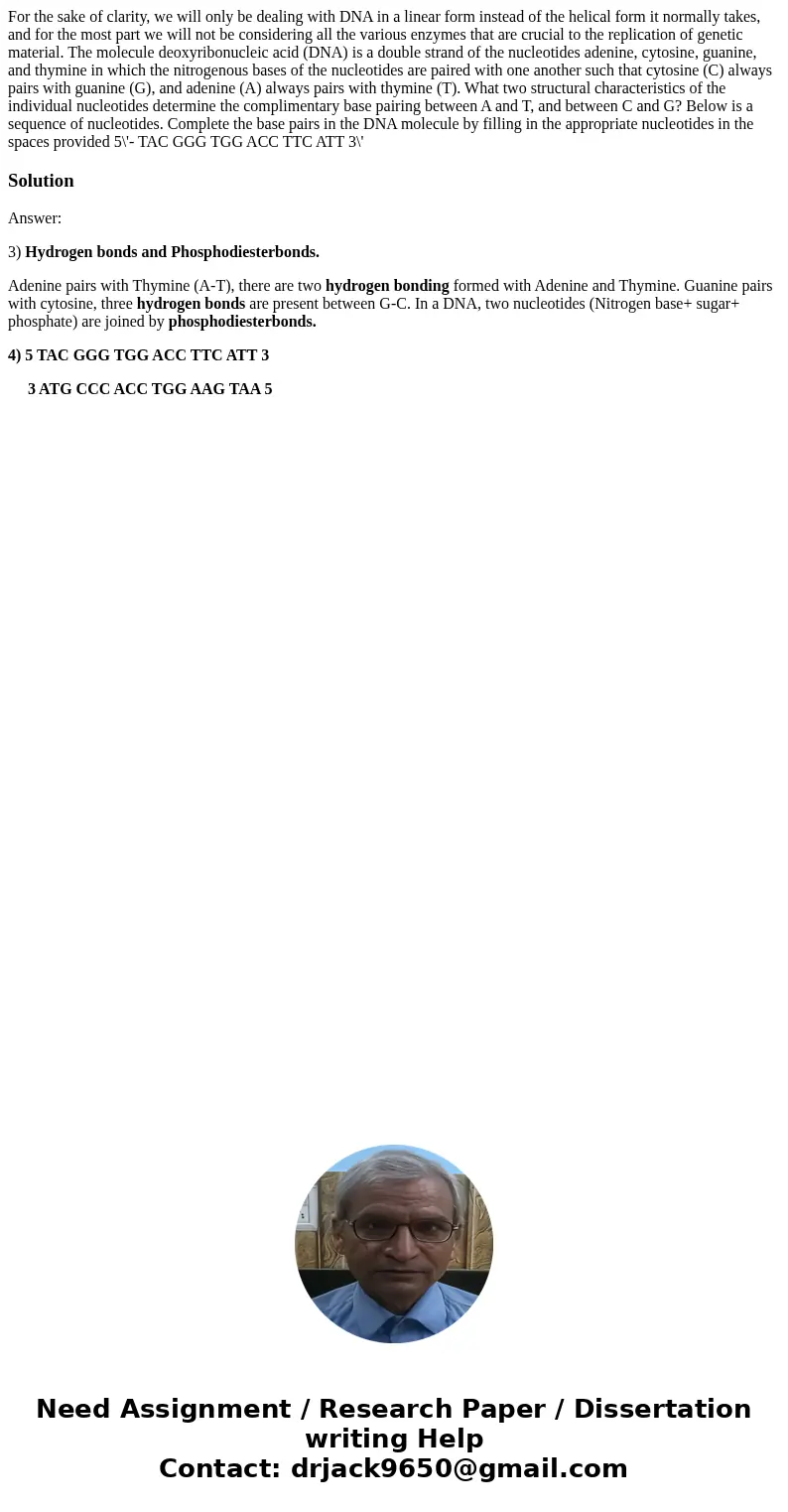For the sake of clarity we will only be dealing with DNA in
For the sake of clarity, we will only be dealing with DNA in a linear form instead of the helical form it normally takes, and for the most part we will not be considering all the various enzymes that are crucial to the replication of genetic material. The molecule deoxyribonucleic acid (DNA) is a double strand of the nucleotides adenine, cytosine, guanine, and thymine in which the nitrogenous bases of the nucleotides are paired with one another such that cytosine (C) always pairs with guanine (G), and adenine (A) always pairs with thymine (T). What two structural characteristics of the individual nucleotides determine the complimentary base pairing between A and T, and between C and G? Below is a sequence of nucleotides. Complete the base pairs in the DNA molecule by filling in the appropriate nucleotides in the spaces provided 5\'- TAC GGG TGG ACC TTC ATT 3\' 
Solution
Answer:
3) Hydrogen bonds and Phosphodiesterbonds.
Adenine pairs with Thymine (A-T), there are two hydrogen bonding formed with Adenine and Thymine. Guanine pairs with cytosine, three hydrogen bonds are present between G-C. In a DNA, two nucleotides (Nitrogen base+ sugar+ phosphate) are joined by phosphodiesterbonds.
4) 5 TAC GGG TGG ACC TTC ATT 3
3 ATG CCC ACC TGG AAG TAA 5

 Homework Sourse
Homework Sourse